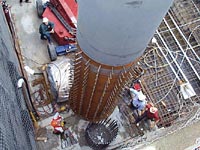 |
|
 |
| |
| |
| |
| |
| |
| |
| |
Campus: Kensington Campus
| |
| |
Career: Undergraduate
| |
| |
Units of Credit: 6
| |
| |
| |
| |
Contact Hours per Week: 4
| |
| |
Enrolment Requirements:
| |
| |
Prerequisite: ARCH1371
| |
| |
| |
| |
| |
 |
|
 |
Description
Legal implications of architectural practice. Liabilities of architects. The architect/client agreement. Types of building contract and methods of building procurement. Tendering and negotiating. Contract administration procedures. Professional defensive measures and crisis management. Introduction to management theory. The structure and organization of an architectural office. Aspects of company and partnership law and insurance. Business principles and management procedures relevant to an architectural practice. The course will examine the production of architecture as a social event, it will analyse a series of explanations of the relationships between society and space and will look at both Asian and Western cultures as examples. The focus of this analysis will include issues such as: the role of economics and politics, urban administration, cultural difference, social theory etc, to architecture. This will be carried out by examining questions such as what is the relationship between architecture and urban politics? What part does architecture play in the political economy of cities? How does architecture as a commodity reflect commodity producing society as a whole? What basic social theories inform what we might call a social theory of architectural production? How do investors, developers, industrialists and others view architecture and building? What is the administrative environment for the production of architecture? (Government policy at national, regional and local levels, development planning, planning legislation, structure and local plans etc). How does architecture relate to the reproduction of culture - what theories of cultural production exist, and how do they interface with urban politics? What part does architecture play in the sustainability of cities and urban environments as a whole?
|

